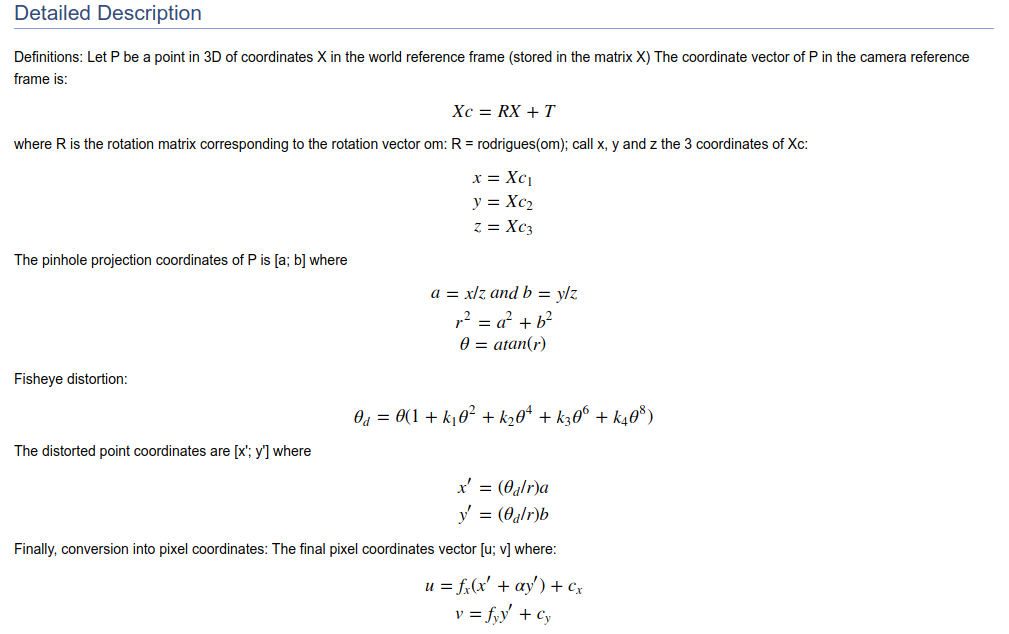This script applies a fisheye distortion to rendered images. The output images can be cropped to a
rectangle and resized. The fisheye distortion is the same as detailed in OpenCV 4.4 docs.
As mentioned in the docs, the distortion is characterized by 4 parameters, [k1, k2, k3, k4], which are
passed via the config file or command line arguments.
The arguments for the script are passed via the config file. All the parameters in the config file can be overriden from the command line. You must specify:
- The
input dirin which to search for files, - The
filename extentionof the input files (eg: .rgb.png, .segments.png) - Whether to use linear
interpolationduring distortion. For RGB images, using linear interpolation will give smoother results. Other types of images (masks, normals, depth) should never use linear interpolation.
- Distorting RGB images: Use linear interpolation to get smoother results
python apply_fisheye_distortion.py dir.input=samples/ file_ext.input=.rgb.png linear_interpolation=True- Distorting Masks: Use nearest neighbor interpolation to preserve correct values
python apply_fisheye_distortion.py dir.input=samples/ file_ext.input=.segments.png- Saving output files to a different directory. A new directory will be created if it does not exist.
python apply_fisheye_distortion.py dir.output=samples/outputYou can edit the config file, config.yaml, to customize the default parameters:
dir:
input: samples/
output: null # If not specified, outputs files to same dir as input.
file_ext:
input: .rgb.png # The files you want to apply distortion to
info: .info.json # Contains camera intrinsics
linear_interpolation: False # Enable Linear for RGB images. Else use nearest-neighbor for masks, normals and depth.
crop_and_resize_output: True # Disable to get original distorted image. Else output will be of same resolution as input.
workers: 0 # How many processes to use to convert files. 0 for all cores in machine.
distortion_parameters:
# Ref: https://docs.opencv.org/4.4.0/db/d58/group__calib3d__fisheye.html
# These are the distortion parameters of a fisheye camera model as defined in the fisheye module of OpenCV 4.4.0
k1: 0.17149
k2: -0.27191
k3: 0.25787
k4: -0.08054
# Hydra specific params.
hydra:
output_subdir: null # Disable saving of config files.
run:
dir: . # Set working dir to current directory
defaults:
# Disable log files
- hydra/job_logging: default
- hydra/hydra_logging: disabledThis script requires Python 3.7 or greater. The dependencies can be installed via pip:
pip install requirements.txtAlternately, you can use the provided dockerfile.
# Build the docker image
bash docker_build.sh
# Run the docker image
bash docker_run.sh
# Inside container
$ python apply_fisheye_distortion.py dir_input=/dataThis will process all the images found in the container's /data directory. Modify the
docker_run.sh script to change which host directory is mounted to the container's /data.
From OpenCV docs,
here is the description of the fisheye camera model used to create the distortion. The
distortion co-efficients [k1, k2, k3, k4] are detailed below:

